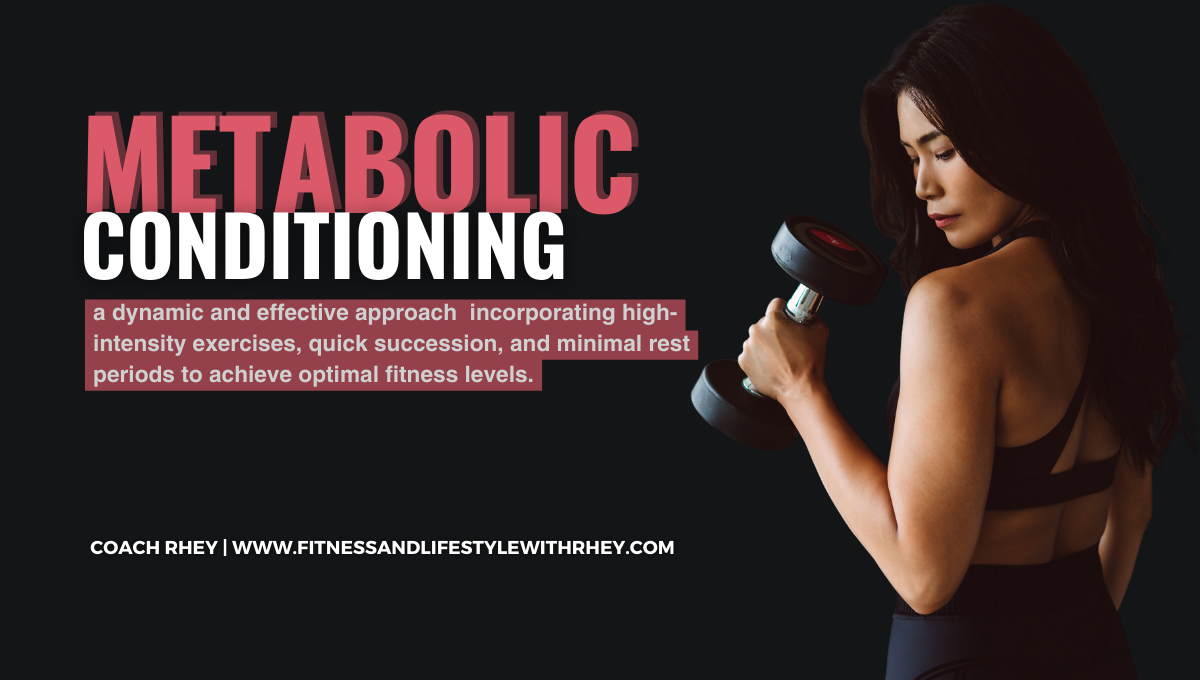Time is a valuable commodity, and we all want to achieve the best possible results in the limited time we have available. That’s why it’s essential to explore innovative and efficient fitness approaches that go beyond traditional exercise routines. One such approach that has gained significant attention and acclaim is metabolic conditioning. In this article, we will delve into the depths of metabolic conditioning, unraveling its secrets and uncovering how it can transform your fitness journey.
So, what exactly is metabolic conditioning? At its core, metabolic conditioning is a strategic and dynamic workout method that targets your body’s energy systems to optimize your overall fitness levels. Unlike traditional exercise routines that may focus solely on cardio or strength training, metabolic conditioning combines the best of both worlds and more. It incorporates high-intensity exercises performed in rapid succession, with minimal rest periods in between. This unique approach not only challenges your cardiovascular endurance but also engages your muscles in ways that promote strength, power, and endurance.
The science behind metabolic conditioning lies in understanding your body’s energy systems. Our bodies rely on two main energy pathways during exercise: aerobic and anaerobic. The aerobic pathway utilizes oxygen to produce energy over an extended period, while the anaerobic pathway kicks in when oxygen supply is limited and produces energy in short, intense bursts. Metabolic conditioning workouts aim to push the boundaries of both these energy systems, forcing your body to adapt and become more efficient in delivering energy to your muscles.
One key concept that sets metabolic conditioning apart is the concept of Excess Post-Exercise Oxygen Consumption, or EPOC. After a high-intensity metabolic conditioning workout, your body continues to consume oxygen at an elevated rate during the recovery period. This phenomenon leads to increased calorie burn even after the workout is over, allowing you to reap the benefits long after you’ve left the gym. This metabolic “afterburn” effect is a major contributor to the fat loss and weight management benefits associated with metabolic conditioning.

Benefits of Metabolic Conditioning: Enhancing Fitness Levels
Now, you may be wondering how metabolic conditioning can transform your fitness journey. First and foremost, metabolic conditioning workouts are incredibly time-efficient. With their high-intensity nature and shorter duration, you can achieve significant results in a fraction of the time compared to traditional workouts. This is particularly beneficial for individuals with busy schedules who struggle to find extended periods for exercise. By incorporating metabolic conditioning into your routine, you can make the most of your limited time and still experience substantial improvements in your overall fitness levels.
In addition to time efficiency, metabolic conditioning offers a wide range of benefits that extend beyond traditional workout methods. By engaging both your aerobic and anaerobic energy systems, you enhance your cardiovascular endurance and stamina. This means you’ll be able to perform daily tasks with greater ease and tackle physical activities that once seemed challenging. Furthermore, metabolic conditioning workouts stimulate muscle growth and development, leading to increased strength and power. These improvements not only enhance your performance during workouts but also have a positive impact on your everyday activities and overall functional fitness.
One of the most appealing aspects of metabolic conditioning is its ability to boost your metabolic rate. Regular metabolic conditioning workouts elevate your metabolism, which is the rate at which your body burns calories. This increase in metabolic rate persists even after your workout, allowing you to burn more calories throughout the day, even when you’re at rest. This is particularly advantageous for those aiming to lose weight or maintain a healthy body composition. By incorporating metabolic conditioning into your fitness routine, you create a powerful metabolic engine that continues to work in your favor, even when you’re not actively exercising.

Key Principles of Effective Metabolic Conditioning Workouts
To design an effective metabolic conditioning routine, certain principles need to be considered. Structuring your workouts with interval training and circuit formats optimizes calorie burn and challenges your body’s energy systems. Selecting exercises that engage multiple muscle groups allows for a full-body workout experience. Additionally, incorporating progressive overload ensures continuous adaptation and improvement.

Designing Your Own Metabolic Conditioning Routine:
Creating a personalized metabolic conditioning routine requires careful consideration of various factors. Starting with a warm-up and incorporating mobility exercises helps prevent injuries and prepares your body for the challenges ahead. Setting specific goals and tracking progress keeps you motivated and focused. Choosing exercises that target different muscle groups and determining appropriate work and rest ratios are crucial for an effective routine.

Maximizing Results: Nutrition and Recovery:
To unleash the full potential of metabolic conditioning, proper nutrition and recovery practices are essential. Fueling your body with adequate nutrition provides the energy needed for intense workouts. Hydration and electrolyte balance play a crucial role in performance optimization. Incorporating rest days and active recovery allows your muscles to repair and grow stronger. Additionally, quality sleep significantly impacts both recovery and overall exercise performance.
In conclusion, metabolic conditioning presents a dynamic and effective approach to achieving optimal fitness levels. By incorporating high-intensity exercises, quick succession, and minimal rest periods, you can elevate your workouts to a whole new level. It is a revolutionary fitness approach that can transform your fitness journey in numerous ways. By targeting your body’s energy systems, metabolic conditioning optimizes your workouts, making them more efficient.







